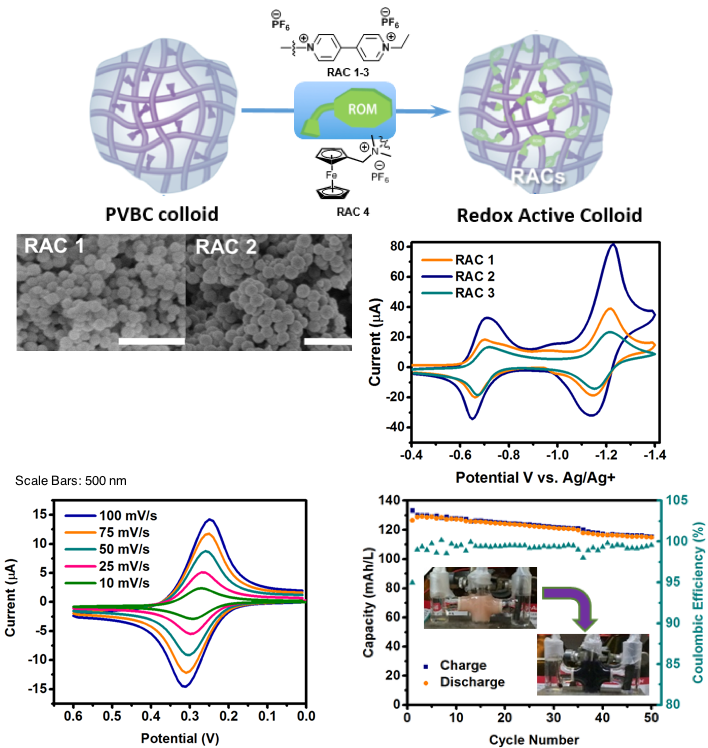
Scientific Achievement
Redox active colloids (RACs) were introduced as a promising class of energy storage materials. These were synthesized and electrochemically studied for their charge transfer properties as well as charge storage capabilities.
Significance and Impact
A modular synthetic approach can now be used to synthesize “zero-crossover” materials for energy storage applications that utilize nanoporous membranes. RACs demonstrate that three dimensional macromolecular design can be used for the size-exclusion approach to nonaqueous flow batteries.
Research Details
- RACs were synthesized from poly(vinylbenzyl chloride) colloids via modular synthesis in several size distributions from 80 – 800 nm.
- All RAC sizes showed near complete rejection across a nanoporous membrane.
- RAC voltammetry showed electrochemical reactivity and reversibility.
- Versatile electrode formats, including RAC monolayers demonstrated
- Bulk measurements showed that viologen-based RACs can cycle reversibly at 99 ± 1% Coulombic efficiency over 50 cycles.
- A prototype flow cell pairing ferrocene and viologen-based RACs was demonstrated to cycle efficiently.

